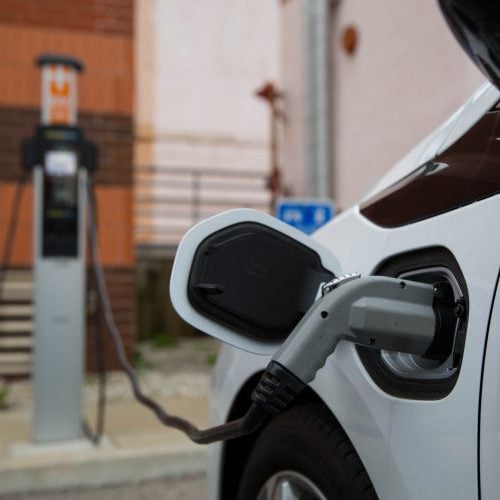Energy
Electric Vehicles to Total 54% of Car Sales by 2040

Published:
Last Updated:

Wednesday’s announcement from Volvo that it will only build new cars with some degree of electrification beginning in 2019 grabbed a lot of headlines. While Volvo is not counted among the largest automakers, it is a well-established brand with a long track record of innovation.
On Thursday, Bloomberg New Energy Finance (BNEF) released its latest long-term forecast for the electric vehicle (EV) marketplace. The analysts are forecasting that sales of light-duty vehicles (passenger cars, pickups, and SUV/crossovers) will rise from around 1% in 2016 to 54% of all vehicle sales by 2040. By that time, one-third of the entire global fleet will be electrified.
BNEF attributes the projected soaring growth to rapidly falling battery costs and increased commitments from carmakers like Volvo. The analysts expect sales of EVs to remain relatively low until 2025 and then reach an inflection point between 2025 and 2030 as EVs “become economical on an unsubsidized total cost of ownership basis across mass-market vehicle classes.”
There are five underlying factors that will drive this growth, according to BNEF:
China, the United States and Europe are expected to comprise about 60% of the global market for EVs by 2040 due to “strong regulatory support” in the period between 2015 and 2025 that will boost consumer demand.
Until 2025, BNEF expects plug-in hybrid vehicles (PHEVs) to play a significant role in EV adoption. After 2025, battery-powered EVs (BEVs) like the Chevy Bolt and the Tesla vehicles are forecast to account for the “vast majority” of EV sales. The reason for the shift is down to the simpler and cheaper BEV platform with its lower cost and less complex powertrain.
Regarding demand for fossil fuel the report notes:
Fossil fuel demand will be displaced by the growing fleet of EVs. We project 34% of cars on the road will be EVs by 2040 – 530 million EVs in total – which will displace up to 8 [million] barrels of transportation fuel per day.
U.S. drivers currently consume between 9.0 million and 9.5 million barrels a day of gasoline, about two-thirds of the total input of crude oil to U.S. refineries. A global demand reduction of 8 million barrels a day is a huge cut to global demand for fossil fuel.
The other side of that coin is a rise in electricity consumption to 5% of global power consumption by 2040.
BNEF also notes that the global charging infrastructure, while growing, needs to grow faster. Lack of an adequate home charging infrastructure “will be a barrier to adoption and will restrict EV sales from reaching 100%.”
Finally, the analysts see autonomous (self-driving) vehicles as having only a limited impact over the next decade. The good news for EV makers is that 80% of all autonomous vehicles in shared applications like ride-hailing and car sharing will be electric by 2040.
Take the quiz below to get matched with a financial advisor today.
Each advisor has been vetted by SmartAsset and is held to a fiduciary standard to act in your best interests.
Here’s how it works:
1. Answer SmartAsset advisor match quiz
2. Review your pre-screened matches at your leisure. Check out the
advisors’ profiles.
3. Speak with advisors at no cost to you. Have an introductory call on the phone or introduction in person and choose whom to work with in the future
Take the retirement quiz right here.
Thank you for reading! Have some feedback for us?
Contact the 24/7 Wall St. editorial team.